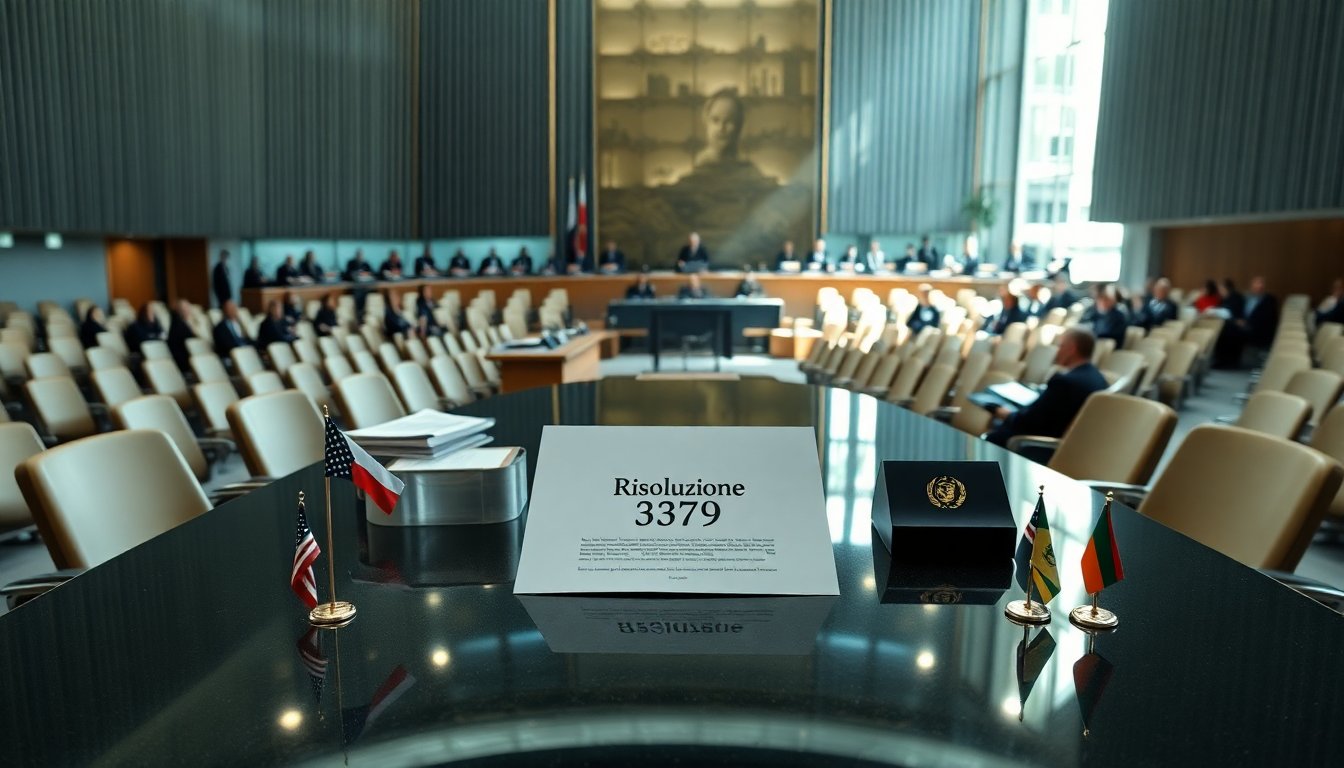Table of Contents
The passage of UN Resolution 3379 on November 10, 1975, marked a significant moment in international relations. It declared Zionism a form of racism and racial discrimination. This resolution emerged during a period of heightened global awareness regarding issues related to colonialism and imperialism, particularly within the context of the Palestinian struggle for liberation. The decision faced fierce opposition from various nations, notably the United States, which viewed it as a direct affront to the Jewish community and a dangerous precedent for anti-Semitism.
Following the resolution’s passage, prominent figures such as Daniel Patrick Moynihan, the U.S. ambassador to the UN, expressed strong condemnation. He warned that the UN risked legitimizing anti-Semitism through its actions, stating that “a great evil has been loosed upon the world.” This sentiment resonated with many, who perceived the resolution not just as a political statement but as a profound moral failing of the international community.
A deep dive into the resolution’s historical context
Resolution 3379 was introduced during the 30th session of the UN General Assembly, emerging from a coalition of states advocating for the recognition of Palestinian rights. The resolution sought to highlight the intersection of various forms of discrimination, particularly the linkage between Zionism and the systemic oppression faced by Palestinians. It was positioned as part of a broader fight against racism and racial discrimination globally.
The drafting process and political maneuvers
The drafting of this resolution encountered significant procedural challenges, as opponents attempted to undermine its passage. Nevertheless, it passed with a notable majority. The language used in the document reflected both the political climate of the time and the growing solidarity among nations opposing colonial oppression.
Revisiting the implications of the resolution
Professor Noura Erakat, a key speaker at the event, examined the intricate history surrounding the resolution’s passage. She outlined the shifts in the geopolitical landscape over the decades and analyzed ongoing debates about Zionism and its implications for racism today. This retrospective analysis is critical for understanding how past actions influence current dialogues surrounding social justice and human rights.
The path to rescinding the resolution
Despite its initial passage, Resolution 3379 was eventually revoked by Resolution 46/86 on December 16, 1991, following intense diplomatic negotiations and as a prerequisite for the Oslo Accords. This reversal highlighted the complex dynamics within international politics, where the fight for Palestinian rights intersects with broader geopolitical interests.
The revocation of the resolution was viewed by some as a victory for advocates of peace and reconciliation, while others regarded it as a betrayal of the principles established in 3379. The ongoing debates surrounding this issue underscore the importance of critically analyzing the historical trajectory of such resolutions and their lasting impacts on international relations.
Modern implications and continued activism
Today, the legacy of Resolution 3379 continues to resonate within discussions of Palestinian rights and anti-racism efforts globally. Activists and scholars recognize the need to contextualize the fight against racism within the broader narrative of human rights. The recent events at UCLA remind us of the importance of academic discourse in shaping public understanding of these complex issues.
The examination of UN Resolution 3379 reveals not only the historical tensions surrounding the Israeli-Palestinian conflict but also the ongoing struggle against racism in all its forms. This resolution, while controversial, serves as a pivotal point in understanding the intersection of politics, identity, and human rights that continues to shape our world.


